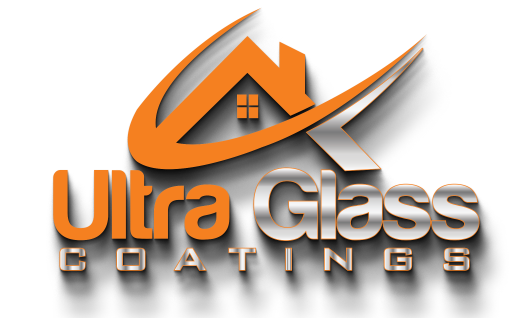Home > Press > A new study provides insights into cleaning up noise in quantum entanglement:When it comes to purifying quantum entanglement, new theoretical work highlights the importance of tailoring noise-minimizing solutions to specific quantum systems
 |
| Researchers at the University of Chicago Pritzker School of Molecular Engineering (UChicago PME), University of Illinois Urbana-Champaign, and Microsoft have shown that it is fundamentally impossible to design a single one-size-fits-all protocol to counteract the noise from the environment that degrades entangled states. (Image copyright istockphoto.com) |
Abstract:
Quantum entanglement a connection between particles that produces correlations beyond what is classically possible will be the backbone of future quantum technologies, including secure communication, cloud quantum computing, and distributed sensing. But entanglement is fragile; noise from the environment degrades entangled states over time, leaving scientists searching for methods to improve the fidelity of noisy entangled states.
A new study provides insights into cleaning up noise in quantum entanglement:When it comes to purifying quantum entanglement, new theoretical work highlights the importance of tailoring noise-minimizing solutions to specific quantum systems
Chicago, IL | Posted on May 16th, 2025
Now, researchers at the University of Chicago Pritzker School of Molecular Engineering (UChicago PME), University of Illinois Urbana-Champaign, and Microsoft have shown that it is fundamentally impossible to design a single one-size-fits-all protocol to counteract that noise.
In quantum information, we often hope for a protocol that works in all scenarios a kind of cure-all, said Asst. Prof. Tian Zhong, senior author of the new work published in Physical Review Letters. This result shows that when it comes to purifying entanglement, thats simply too good to be true.
The findings, he said, instead highlight the importance of tailoring noise-minimizing solutions to specific quantum systems.
Searching for solutions
To counteract the degradation of entangled states due to noise, scientists often use entanglement purification protocols (EPPs), which combine multiple imperfect entangled pairs to try to extract fewer pairs with less noise. But the team knew that certain systems are hard to clean of noise often because the input states of EPPs are almost never identical in reality. Entanglement states vary based on how and when they are created, stored, and processed.
Graduate student Allen Zang from UChicago PME, and Xinan Chen from UIUC are the co-first authors of this paper. We knew that existing input-independent protocols are not guaranteed to improve the fidelity of the entangled states, said Zang. We wondered whether there was any possible protocol that can always guarantee improvements, a property we call universality. said Chen.
Zang, Chen and their colleagues began by tackling the question within a set of broadly-used EPPs, applying the protocols to known quantum operations. However, the idea of universality failed. Surprised, they broadened their analysis to all mathematically possible purification methods allowed under the rules of quantum mechanics.
Still the result held: no universal EPP is guaranteed to improve fidelity of entangled states in all possible quantum systems.
Importantly, were not saying purification protocols dont work, said Eric Chitambar, Assoc. Professor of Electrical and Computer Engineering at UIUC. But no single method works in all cases.
A fundamental limit
The work carries real implications for the design of quantum communication networks, where entangled states must be generated, stored, and transmitted over long distances. In these systems, blindly applying a purification protocol without knowing the exact state of the system can backfire.
Instead, the authors say, the results offer guidance: rather than seeking a universal solution, researchers should focus on tailoring error management strategies to the specific systems and error models theyre working with.
This result tells us not to waste time searching for a protocol that doesnt exist, and instead put more emphasis on understanding the unique characteristics of specific quantum systems, said Martin Suchara, Director of Product Management at Microsoft, one of the co-authors.
The team is now exploring how this kind of theoretical boundary might apply to other quantum resources. Theyre also investigating whether customized purification methods could still be developed for systems with well-understood errors or whether a nearly universal method might exist under stricter constraints.
Funding: This work was supported by the NSF Quantum Leap Challenge Institute for Hybrid Quantum Architectures and Networks (NSF Award 2016136), the Marshall and Arlene Bennett Family Research Program, and the U.S. Department of Energy.
####
For more information, please click here
Contacts:
Tyler Prich
University of Chicago
Copyright © University of Chicago
If you have a comment, please Contact us.
Issuers of news releases, not 7th Wave, Inc. or Nanotechnology Now, are solely responsible for the accuracy of the content.
Bookmark:









 Citation: No-Go Theorems for Universal Entanglement Purification, Zang et al., Physical Review Letters, May 13, 2025. DOI:10.1103/PhysRevLett.134.190803:
Citation: No-Go Theorems for Universal Entanglement Purification, Zang et al., Physical Review Letters, May 13, 2025. DOI:10.1103/PhysRevLett.134.190803:
News and information

New nanoparticle could make cancer treatment safer, more effective: Scientists create a tiny particle for use with focused ultrasound on solid tumors May 16th, 2025

New gel could boost coral reef restoration: The substance, applied to surfaces as a coating, improved coral larvae settlement by up to 20 times in experiments compared to untreated surfaces May 16th, 2025

Low-cost formulation reduces dose and increases efficacy of drug against worms: Praziquantel, usually administered in large tablets, is the only anthelmintic available on the market. New form of presentation uses nanotechnology and facilitates use by children and pets May 16th, 2025

Sugar-coated nanotherapy dramatically improves neuron survival in Alzheimers model: New treatment traps, neutralizes toxic proteins to stop disease progression May 16th, 2025
Quantum Physics

Following the folds with quantum technology: The connection between a crumpled sheet of paper and quantum technology: A research team at the EPFL in Lausanne (Switzerland) and the University of Konstanz (Germany) uses topology in microwave photonics to make improved systems of May 16th, 2025

Quantum sensors tested for next-generation particle physics experiments: New research shows that the specialized sensors can detect particles more precisely April 25th, 2025
Physics

Following the folds with quantum technology: The connection between a crumpled sheet of paper and quantum technology: A research team at the EPFL in Lausanne (Switzerland) and the University of Konstanz (Germany) uses topology in microwave photonics to make improved systems of May 16th, 2025

Quantum sensors tested for next-generation particle physics experiments: New research shows that the specialized sensors can detect particles more precisely April 25th, 2025
Quantum communication

Nanophotonic platform boosts efficiency of nonlinear-optical quantum teleportation April 25th, 2025

Physicists unlock the secret of elusive quantum negative entanglement entropy using simple classical hardware August 16th, 2024
Possible Futures

Following the folds with quantum technology: The connection between a crumpled sheet of paper and quantum technology: A research team at the EPFL in Lausanne (Switzerland) and the University of Konstanz (Germany) uses topology in microwave photonics to make improved systems of May 16th, 2025

New gel could boost coral reef restoration: The substance, applied to surfaces as a coating, improved coral larvae settlement by up to 20 times in experiments compared to untreated surfaces May 16th, 2025

Low-cost formulation reduces dose and increases efficacy of drug against worms: Praziquantel, usually administered in large tablets, is the only anthelmintic available on the market. New form of presentation uses nanotechnology and facilitates use by children and pets May 16th, 2025

Sugar-coated nanotherapy dramatically improves neuron survival in Alzheimers model: New treatment traps, neutralizes toxic proteins to stop disease progression May 16th, 2025
Quantum Computing

Programmable electron-induced color router array May 14th, 2025

New ocelot chip makes strides in quantum computing: Based on “cat qubits,” the technology provides a new way to reduce quantum errors February 28th, 2025

New quantum encoding methods slash circuit complexity in machine learning November 8th, 2024

Quantum researchers cause controlled wobble in the nucleus of a single atom September 13th, 2024
Discoveries

Following the folds with quantum technology: The connection between a crumpled sheet of paper and quantum technology: A research team at the EPFL in Lausanne (Switzerland) and the University of Konstanz (Germany) uses topology in microwave photonics to make improved systems of May 16th, 2025

New gel could boost coral reef restoration: The substance, applied to surfaces as a coating, improved coral larvae settlement by up to 20 times in experiments compared to untreated surfaces May 16th, 2025

Low-cost formulation reduces dose and increases efficacy of drug against worms: Praziquantel, usually administered in large tablets, is the only anthelmintic available on the market. New form of presentation uses nanotechnology and facilitates use by children and pets May 16th, 2025

Sugar-coated nanotherapy dramatically improves neuron survival in Alzheimers model: New treatment traps, neutralizes toxic proteins to stop disease progression May 16th, 2025
Announcements

New nanoparticle could make cancer treatment safer, more effective: Scientists create a tiny particle for use with focused ultrasound on solid tumors May 16th, 2025

Following the folds with quantum technology: The connection between a crumpled sheet of paper and quantum technology: A research team at the EPFL in Lausanne (Switzerland) and the University of Konstanz (Germany) uses topology in microwave photonics to make improved systems of May 16th, 2025

New gel could boost coral reef restoration: The substance, applied to surfaces as a coating, improved coral larvae settlement by up to 20 times in experiments compared to untreated surfaces May 16th, 2025

Low-cost formulation reduces dose and increases efficacy of drug against worms: Praziquantel, usually administered in large tablets, is the only anthelmintic available on the market. New form of presentation uses nanotechnology and facilitates use by children and pets May 16th, 2025
Interviews/Book Reviews/Essays/Reports/Podcasts/Journals/White papers/Posters

Following the folds with quantum technology: The connection between a crumpled sheet of paper and quantum technology: A research team at the EPFL in Lausanne (Switzerland) and the University of Konstanz (Germany) uses topology in microwave photonics to make improved systems of May 16th, 2025

New gel could boost coral reef restoration: The substance, applied to surfaces as a coating, improved coral larvae settlement by up to 20 times in experiments compared to untreated surfaces May 16th, 2025

Low-cost formulation reduces dose and increases efficacy of drug against worms: Praziquantel, usually administered in large tablets, is the only anthelmintic available on the market. New form of presentation uses nanotechnology and facilitates use by children and pets May 16th, 2025

Sugar-coated nanotherapy dramatically improves neuron survival in Alzheimers model: New treatment traps, neutralizes toxic proteins to stop disease progression May 16th, 2025
Quantum nanoscience

Superconductors: Amazingly orderly disorder: A surprising effect was discovered through a collaborative effort by researchers from TU Wien and institutions in Croatia, France, Poland, Singapore, Switzerland, and the US during the investigation of a special material: the atoms are May 14th, 2025

Programmable electron-induced color router array May 14th, 2025

Unraveling the origin of extremely bright quantum emitters: Researchers from Osaka University have discovered the fundamental properties of single-photon emitters at an oxide/semiconductor interface, which could be crucial for scalable quantum technology February 28th, 2025

Department of Energy announces $71 million for research on quantum information science enabled discoveries in high energy physics: Projects combine theory and experiment to open new windows on the universe January 17th, 2025

![]()
![]()
![]()
![]()
![]()
![]()
![]()










